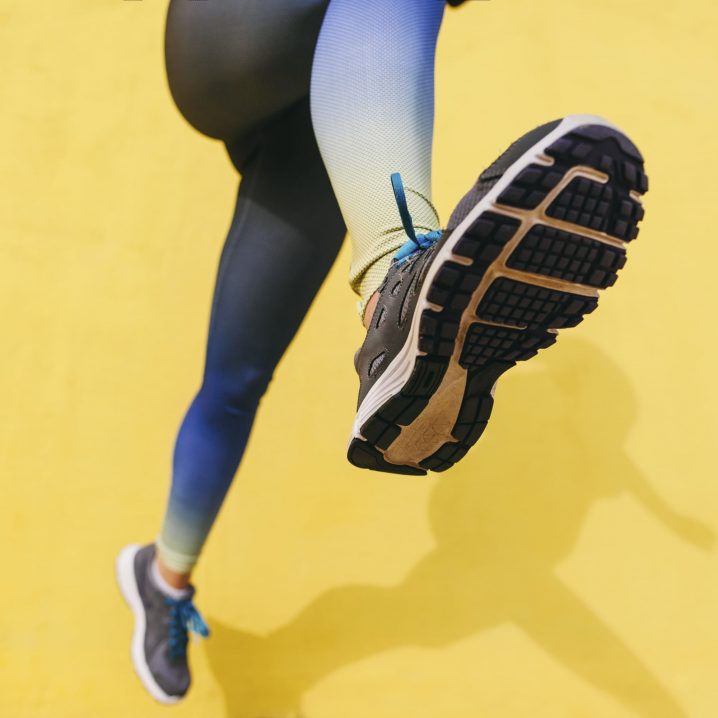
- POPSUGAR Australia
- Fitness
- Adding This 10-Minute Reflex Workout to Your Routine Could Reduce Your Clumsiness
Adding This 10-Minute Reflex Workout to Your Routine Could Reduce Your Clumsiness

Sure, I’ve been known to twist an ankle or knee on every rogue floorboard, rock, or root in my path. Yes, a “think fast” toss in my direction usually ends with me tweaking a wrist. I can admit this.
My nearest and dearest say clumsiness is one of my defining traits – and in their opinion, that won’t ever change. But, NASM-certified personal trainer and Gold’s Gym senior director of fitness Tory Hale begs to differ – my reflexes just need some training.
That’s right, Hale believes that following a well-balanced workout program can promote better reflexes – and therefore reduce one’s chances of injury.
In Hale’s opinion, a good program begins with balance training to help your body build a stronger awareness in space. This form of exercise prompts the motor neurons in your tendons, ligaments, and other connective tissues to react to your surroundings more quickly.
As Hale likes to point out: what’s the point in having fast reflexes if your body doesn’t know where it is in space, right?
Working on your stability is step number two. By strengthening your awareness and stability, Hale notes that your speed, agility, and quickness will improve.
Lastly, if you enhance your tissues’ durability with resistance training, your body will safely catch you when something unexpected comes up, Hale says.
While that explanation may have been a bit complex, the execution part is relatively simple.
If you incorporate two rounds of Hale’s three-move workout – with 30 seconds of rest in-between each round, totaling about 10 minutes – into your fitness routine, you should notice your reflexes improve in time.
Related: Trainers Want You to Start Doing These 12 Exercises to Strengthen and Stabilize Your Core
One Leg Balance
Since most movement comes from walking or running, building hip and ankle stability is important, Hale says. As an added challenge, Hale suggests trying to bounce and catch a ball while staying on one foot throughout this exercise.
- Stand tall on one foot for 30 seconds with the opposite knee lifted to parallel with your hips.
- Switch legs at 30 seconds.
- If this comes easy, try standing on one foot while slightly bending the base leg. Keeping the lifted leg in line with your torso, hinge at the hips, and go only as low as you can go with your back straight.
Bird Dogs
Bird Dogs can help a person’s innate ability to move forward while walking by activating the spiral and lateral lines in the body.
- On your hands and knees, with your hands underneath your shoulders and knees underneath your hips, slowly lift your right leg back behind you until it’s straight and in line with your torso.
- Extend your left arm forward overhead at the same time you extend your right leg.
- Slowly control both back down to the ground and repeat on the other side.
- Alternate sides for 90 seconds.
Toe Jumps
This exercise can condition the muscles to rebound and absorb forces, Hale says.
- Standing tall with your feet underneath your hips, slightly bend at the knee, lift the heels, and begin to bounce on the ball of each foot.
- Try to keep each landing as light and quiet as possible.
- Perform for 90 seconds.
- For an added challenge, try this move one foot at a time – 45 seconds per side.
Click here for more health and wellness stories, tips, and news.

